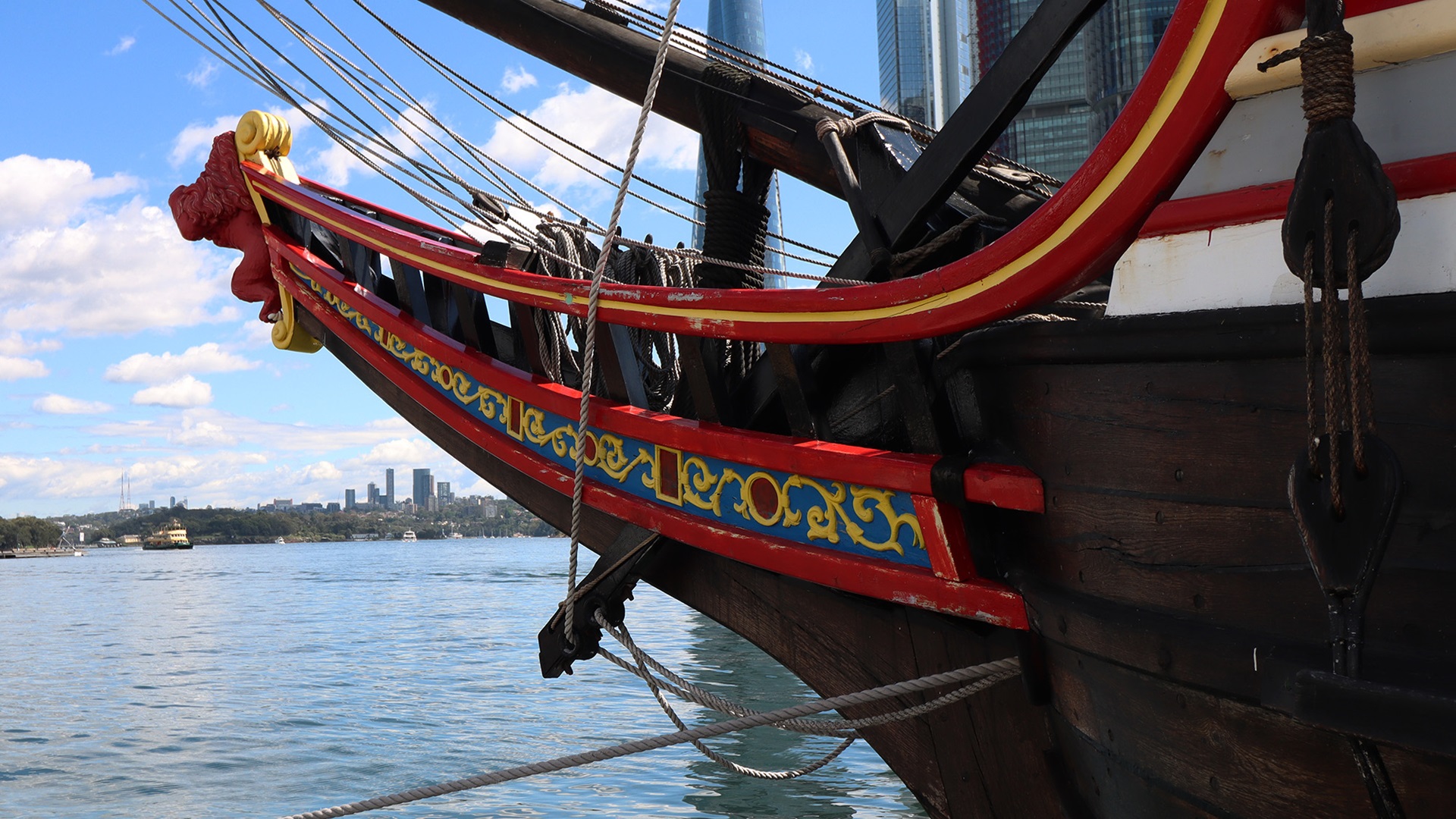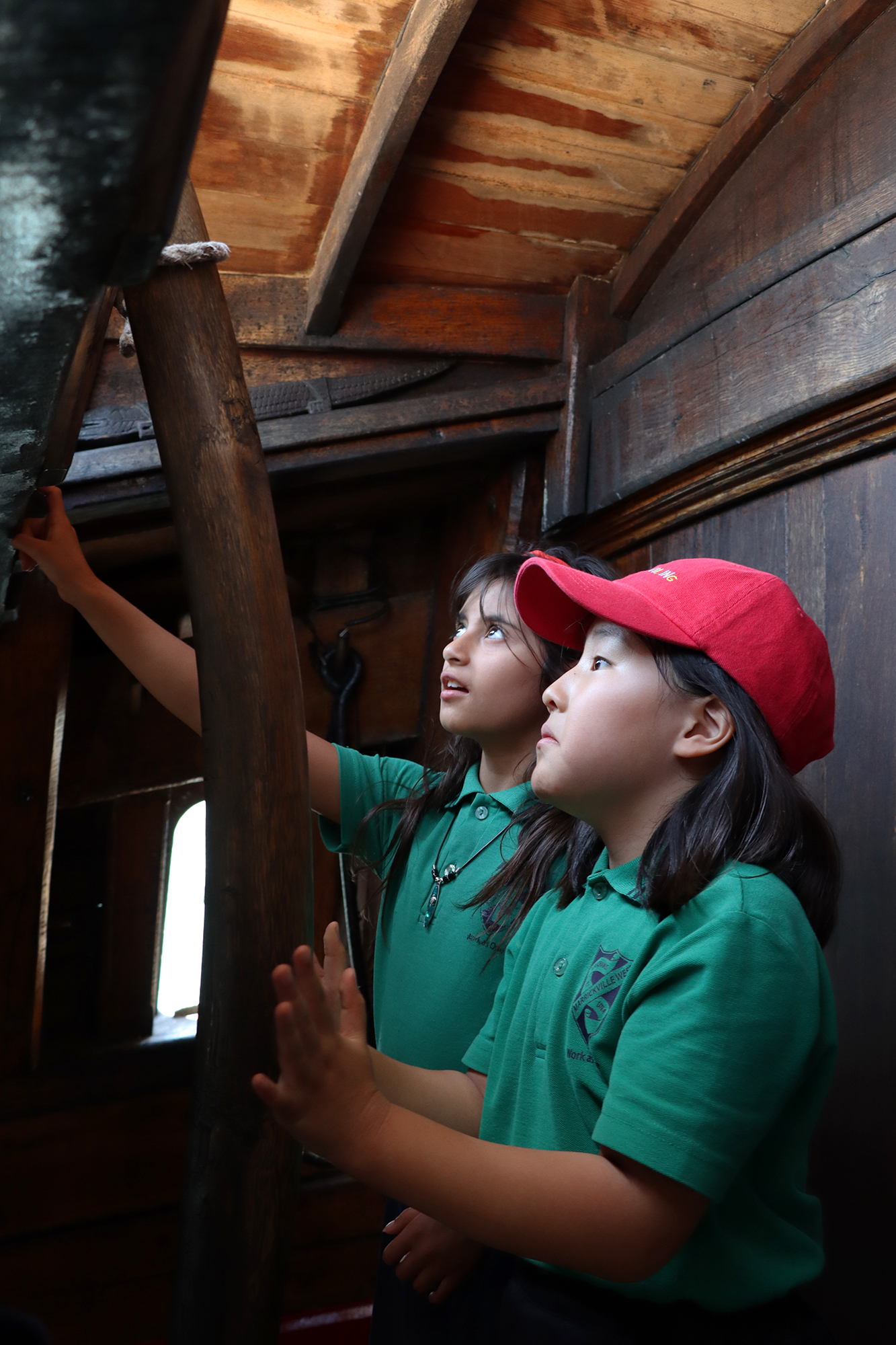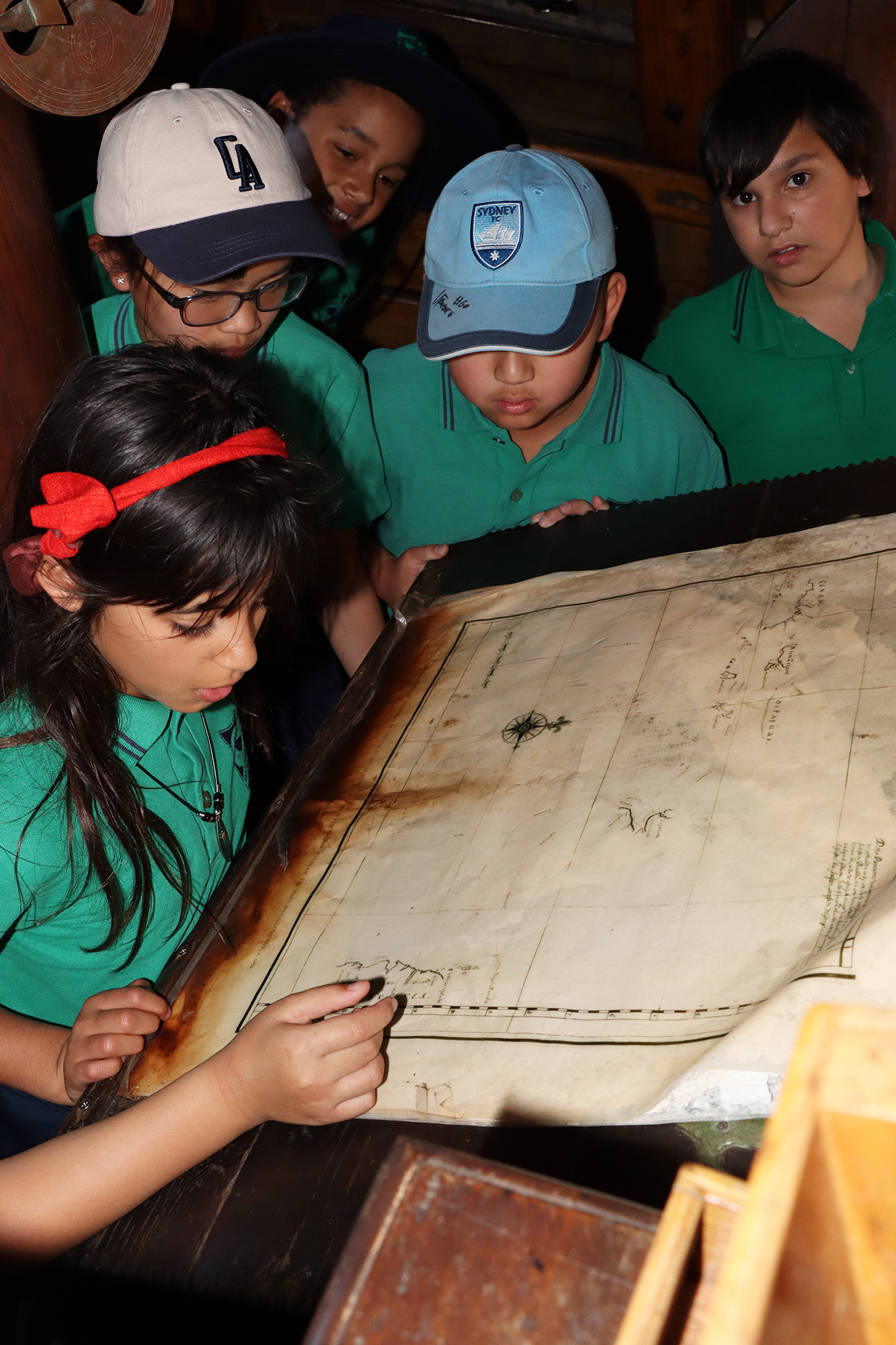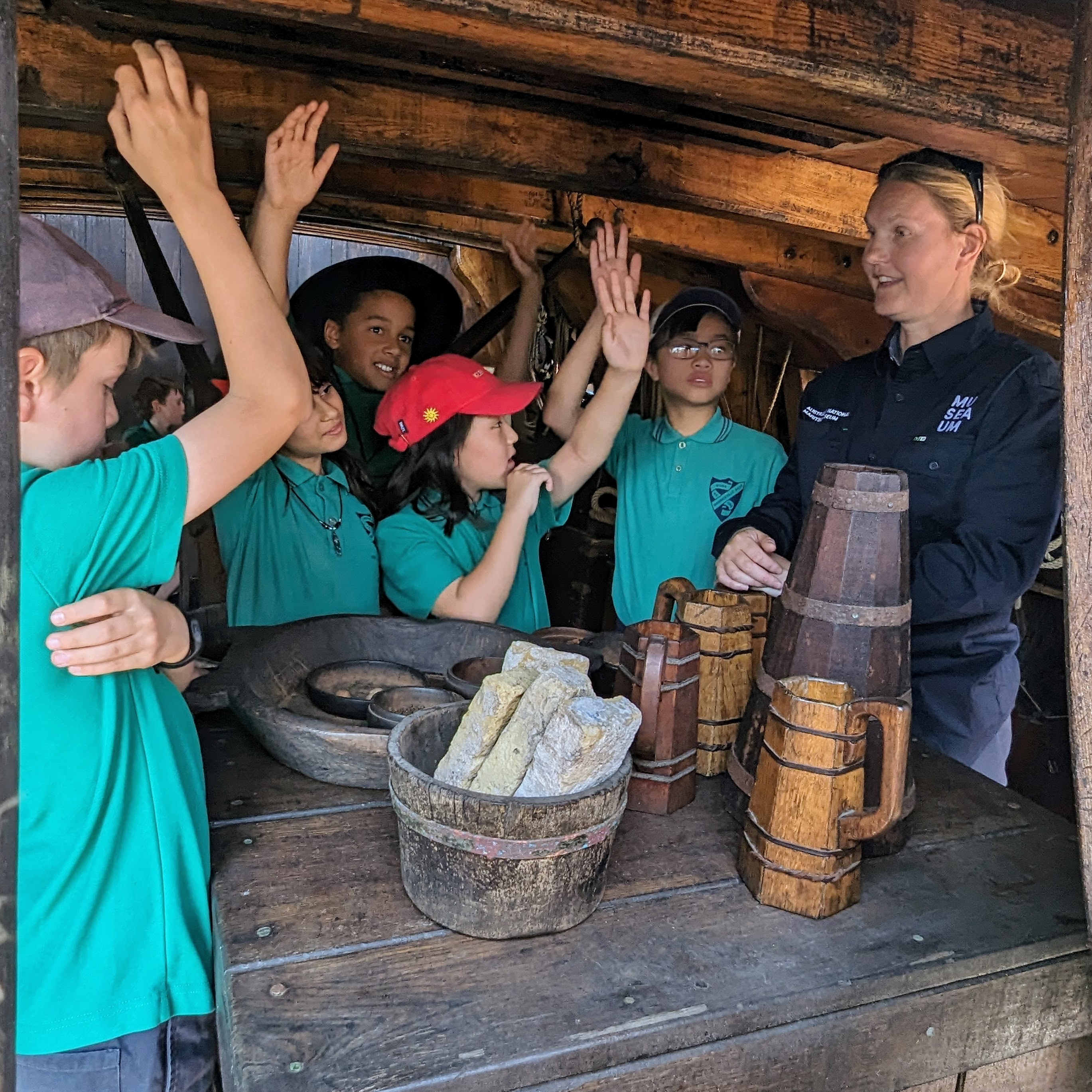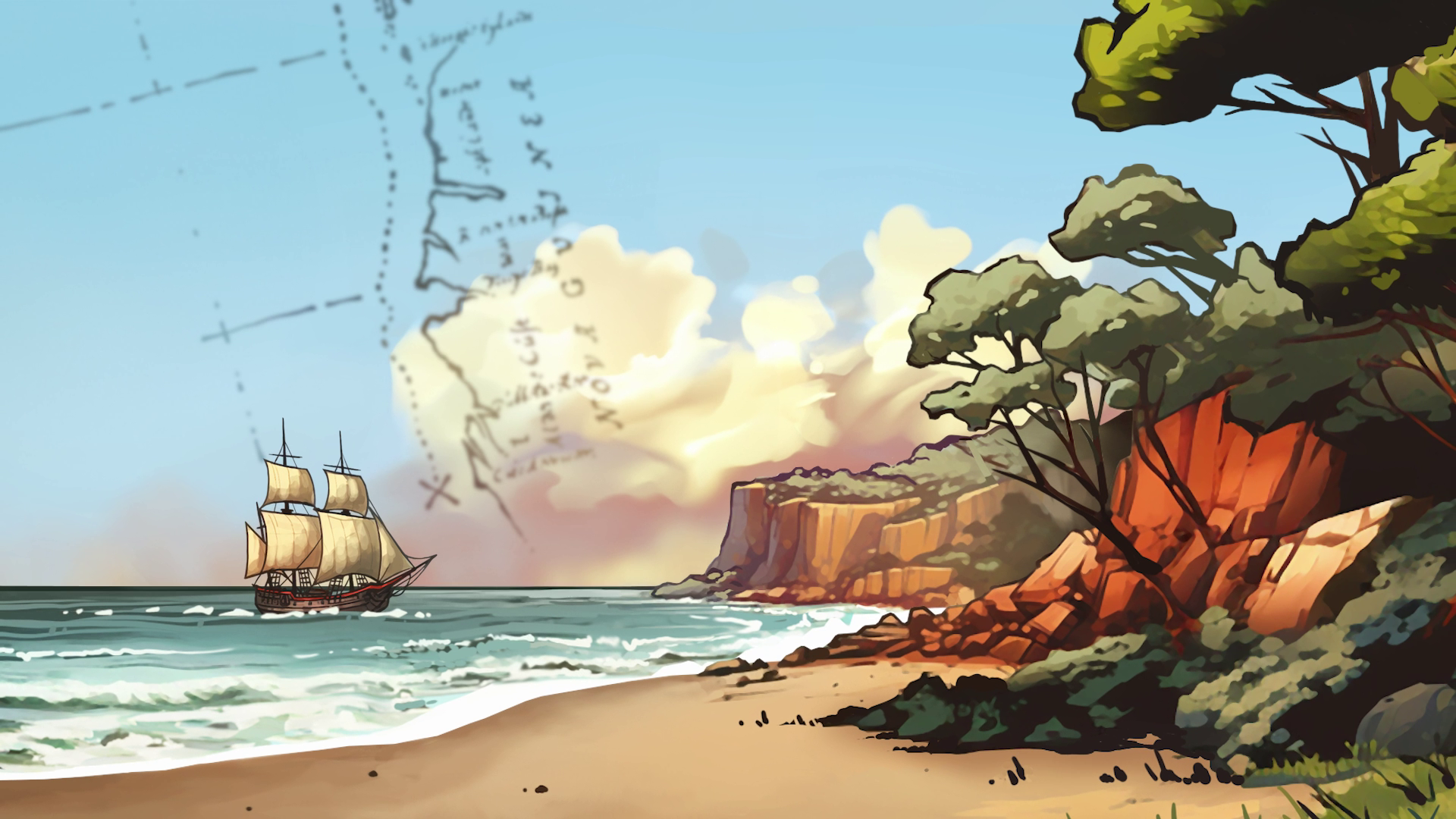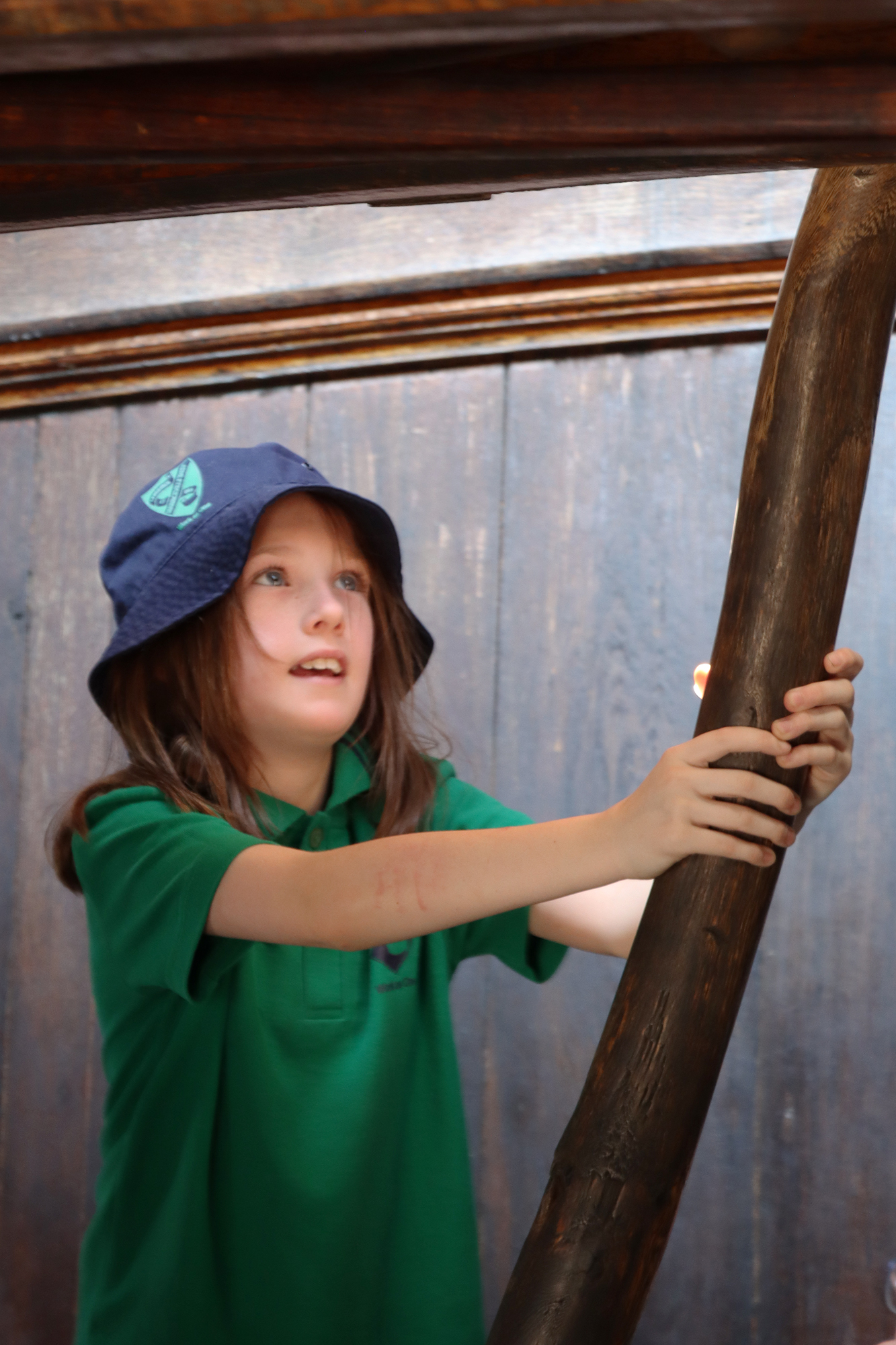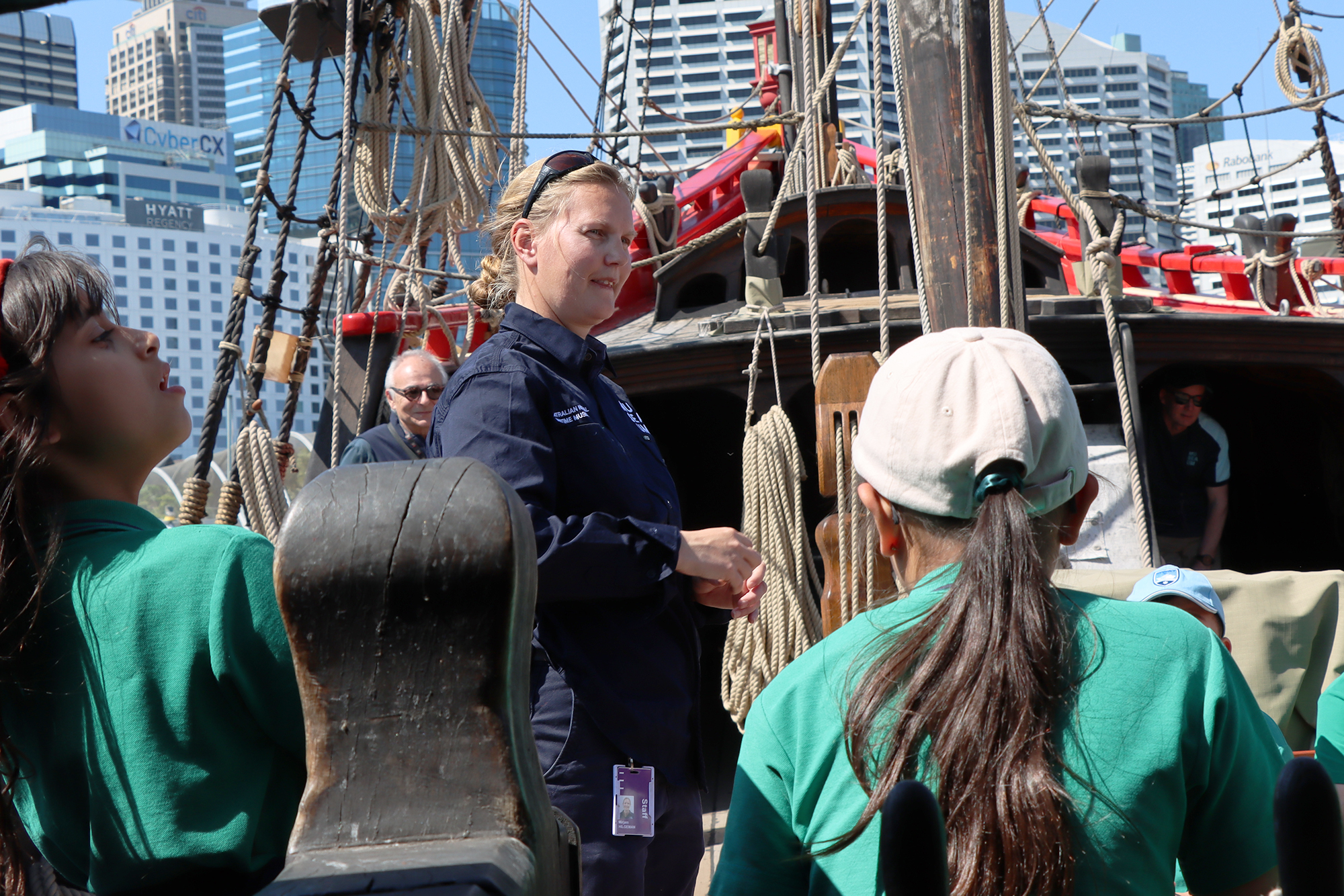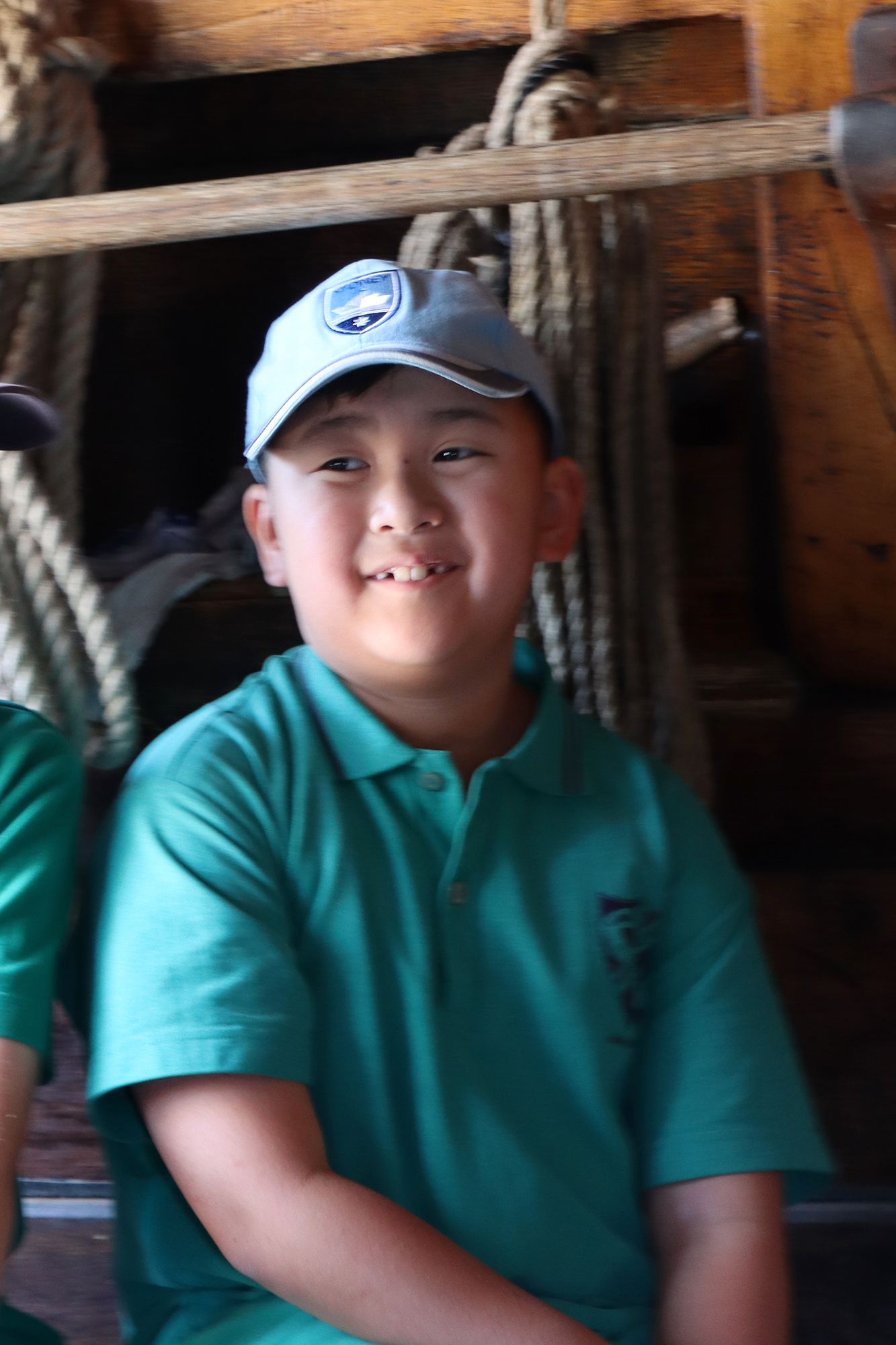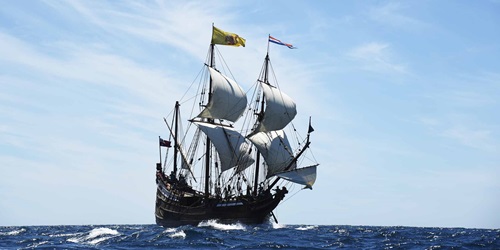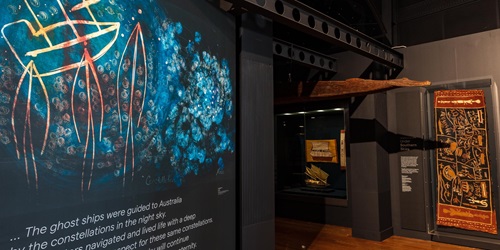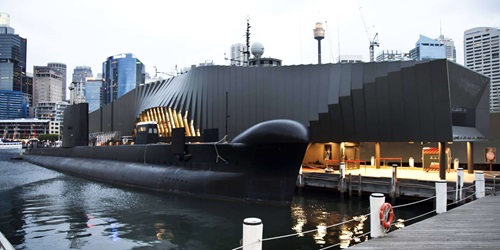Students can climb aboard replica tall ship, Duyfken (which means ‘little dove’ in Dutch), participate in an object-based learning workshop and create messages of reconciliation.
This program covers key curriculum areas, including First Contacts between the Dutch and Wik people at Cape Keerweer in 1606, navigator Willem Jansz, and the significance of trade for the Macassan and Yolngu peoples.
Program structure
The program consists of two sessions:
- Tour: Students explore the top decks of replica tall ship, Duyfken, while learning about the ship’s voyage to Australia in 1606 and navigator, Willem Jansz. Students learn to identify key features of the ship, including the bilge pump, whipstaff, windlass and more!
- Workshop: Students handle objects and learn about First Contacts between the Dutch and Wik people, the Dutch spice trade, and trade between the Macassans and Yolngu people. To conclude, students write and share messages of reconciliation.
Booking information
Duration: 90 minutes (45-minute tour and 45-minute workshop)
Cost: $225 per group with a maximum of 15 students. Teachers / supervisors are FREE.
Ratio: A supervisor to student ratio of 1:15 applies for all programs.
Accessibility: The workshop is conducted in the museum’s learning centre on the ground floor. Unfortunately, due to the slope of the gangways and vessel design, the Duyfken is not wheelchair accessible. Wheelchair users can access the wharf with assistance. Additional staffing can be arranged so that wheelchair users can experience the tour from the wharf. To ensure all students and supervisors have a positive experience at the museum, please indicate if anyone in your group has additional support needs at the time of booking. More information on accessibility at the museum can be found here.
Safety considerations: The tour is conducted outside. It involves bending (to enter small spaces on the vessel) and walking along uneven surfaces (such as the wharves and gangways). Visitors must wear flat, closed-toe shoes. Sunhats are strongly recommended.
Wet weather alternative: In the event of rain, the excursion will still go ahead with a digital interactive in the museum’s classroom and a tour through the museum galleries.
For more information on preparing for your visit, please see Plan Your School Visit.
Package deal
Combine your Tall ship, Duyfken booking with the Navigators, Explorers and Traders tour for $300, per group of 15 students.
The Navigators, Explorers and Traders tour examines first contact stories, navigation and trade between Aboriginal and Torres Strait Islander people, Europeans and non-European traders.
Select Tall ship, Duyfken and Navigators, Explorers and Traders in the booking form to take advantage of this special price.
Teacher resources
Before your visit to the Duyfken, discover the story of the first meeting between the Dutch and the Wik people on the western Cape York Peninsula in Northen Queensland with this beautiful animation Duyfken - The Voyage of the Little Dove and see below for our full education resource exploring this amazing story.
Curriculum References
First Contacts
HT2-3 describes people, events and actions related to world exploration and its effects
HT2-5 applies skills of historical inquiry and communication
Content - The journey(s) of at least ONE world navigator, explorer or trader up to the late eighteenth century, including their contacts with other societies and any impacts.
The nature of contact between Aboriginal people and/or Torres Strait Islanders and others, for example, the Macassans and the Europeans, and the effects of these interactions on, for example, families and the environment.
AC9HS4K01 - The diversity of First Nations Australians, their social organisation and their continuous connection to Country/Place.
- Investigating the diversity and significance of trade and exchange of ideas to First Nations Australians, including with groups outside Australia such as the Macassans.
AC9HS4K02
- Examining the journeys of one or more explorers who sailed parts of the route to Australia... in order to investigate how exploration and knowledge of routes allowed for the later feasible settlement of Australia.
- Examining journeys of the Australian coastline of one or more explorers ... in order to investigate the possibility of countries settling Australia to expand their empires.
AC9HS4K04
- Investigating contact between First Nations Australians and people from different continents (Asia and Europe) before 1788; for example, the repulsion of the Dutch at Cape Keerweer in 1606, trade, sharing of ideas and technologies.
